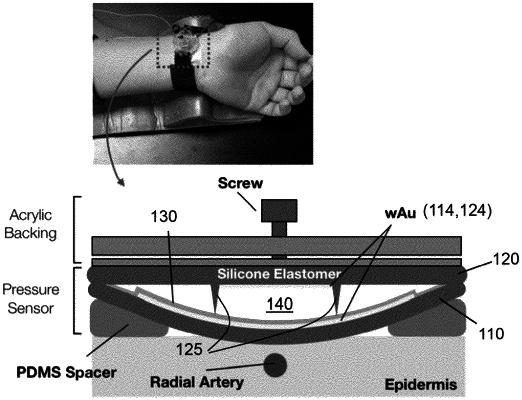| CPC A61B 5/022 (2013.01) [A61B 2562/0247 (2013.01)] | 14 Claims |

|
1. A capacitive pressure sensor (100) comprising:
a. a first electrode layer (110);
b. a second electrode layer (120);
c. a dielectric layer (130) disposed on the first electrode layer (110) such that the dielectric layer (130) is between the first and second electrode layers (110, 120);
d. a plurality of elastic structures (125) projecting from the second electrode layer (120) toward the dielectric layer (130) and first electrode layer (110), wherein the plurality of elastic structures (125) creates an air gap (140) that separates the first electrode layer (110) and the second electrode layer (120); and
e. a conductive metallic film (124) disposed between the plurality of elastic structures (125);
wherein when the sensor (100) is in a resting configuration, the air gap (140) is disposed between the first electrode layer (110) and the second electrode layer (120), wherein the air gap (140) functions as a second dielectric layer, wherein when the sensor (100) is compressed, the first electrode layer (110) and the second electrode layer (120) are brought closer to each other, thereby reducing a height of the air gap and increasing a pressure sensitivity and capacitance of the sensor.
|